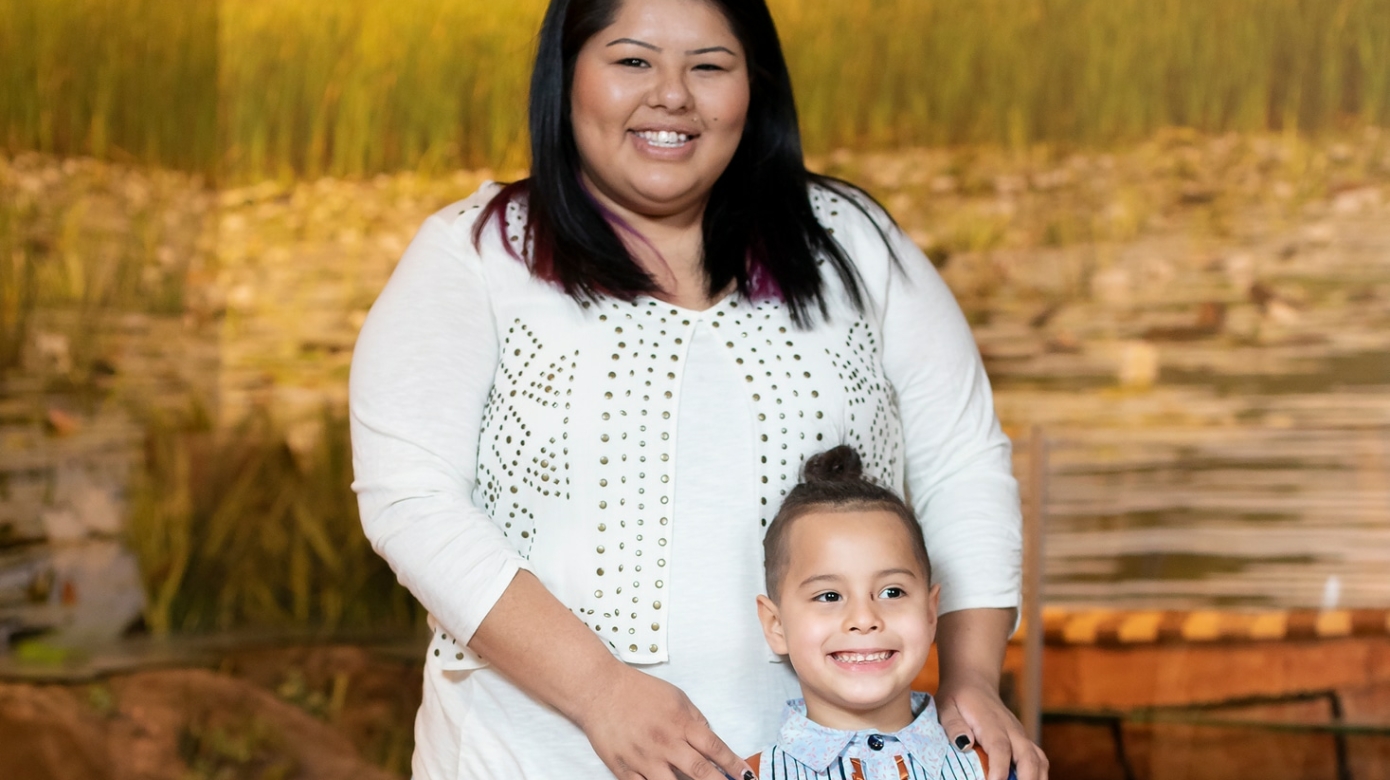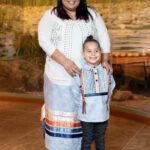Crafting one-of-a-kind, thoughtful pieces of regalia provides Citizen Potawatomi Nation member Lakota Pochedley encouragement and motivation. Although the Slavin descendant maintains a busy schedule as the tribal historic preservation officer for Match-e-be-nash-she-wish Band of Pottawatomi Indians (Gun Lake Tribe), she finds creating, especially for loved ones, offers a sense of balance.
“There’s nothing like it — when you see the whole puzzle come together because it took so much time, and so much of what I create is just for that one person. It’s truly amazing,” Pochedley said.
She grew up outside of Cleveland, Ohio, but her studies and career have allowed her to live all over the United States, including Texas, Oklahoma and Michigan. Throughout her experiences, she has taken the opportunity to learn traditional skills from those around her.
“Growing up, I was lucky because I was taken to powwows, and I did always want to participate and dance. So, that was a huge catalyst for me wanting to learn how to make these things because I wanted to be out there dancing. I felt that desire and wanted to carry on those teachings in that way,” she said.
Although she has a variety of talents like moccasin making and beading, Pochedley enjoys crafting ribbon work and appliqué pieces the most. She uses modern and time-honored methods to make sachkin (traditional women’s blouses), ribbon shirts and skirts. Respecting each image, background and message are important to Pochedley, and that reverence dictates which approach she employs.
“If I’m using old family designs or those meant to honor the old ways, maybe using old traditional colors, I will typically use or incorporate hand-stitched ribbon work techniques. Then if it’s more contemporary, I’ll just use my machine,” she said.
Pochedley began sewing in her youth, and she appreciates the opportunity to use the skills passed down to her by her mother and grandmothers.
“I would say if not all, most of my grandmas were seamstresses of some sort, whether they were professional seamstresses or just sewing to meet the needs of the family. … That’s part of where some of my interest came from,” she said.
When Pochedley moved to Oklahoma, many individuals shared different methods and styles of regalia making with her, including Ardena O’Neal, Gayla Mosteller, Leslie Deer and Esther Lowden. After moving to Michigan, Pochedley and her partner, fellow CPN member and Curley descendant Bill Hobia III, began attending local Potawatomi language and culture events, where she met Madalene Big Bear, Mon-ee Zapata and many other Bodwewadmi/Nishnabé artists.
“Over the last year or so, I have really felt I have come into my own as an artist and seamstress. I credit my mom, mother-in-law, and other family members and friends encouraging me and folks like Madalene and Peggy Kinder (for) sitting down with me to discuss traditional designs and techniques, in particular, hand-stitched appliqué. Those conversations and encouragement really helped build up my confidence, but I’m also thankful they were willing to take the time to make sure I was comfortable with the different techniques and the ways in which we traditionally designed and constructed our regalia,” Pochedley said.
Finessing takes time and dedication, and within the past few years, she has begun crafting her own style and approach.
Process
Pochedley recently made ribbon shirts for her partner, Bill Hobia III, and her brother, Elan Pochedley. Through these projects, she found a renewed sense of pride in bringing back some traditional styles, like pleated men’s ribbon shirts and hand-stitched appliqué.
“I like to experiment with different things, and I like to look at a lot of old pieces,” she said. “I’ll talk to people about those, like old photos or old pieces that you can find in digital collections, and kind of talk through some of those techniques that were used. I always like to keep in mind how we can incorporate those styles and techniques into our current regalia.”
When beginning the process, Pochedley speaks with the individual who will receive it. Next, she completes initial research, like reviewing family photos, before creating a sketch and finalizing colors and fabric. She employs mindfulness during every step.
“I look at old designs, but I talk with folks about which designs are still recognized as family or clan designs and which designs have become more available for all Potawatomi people to use,” she said.
Pochedley often allows the imagery to come to her organically, letting inspiration flow unhindered. It can take a single night or months to finish one design. She said with regalia meant for traditional or ceremonial purposes, it is particularly important that others can recognize the pieces are Potawatomi by using traditional elements that set Nishnabé regalia apart.
“There are definitely moments where I feel much more comfortable and creative. … When I am at those points, I act on it, and I know it’s time to make some things because I don’t always know how long it will last or when inspiration will strike again,” Pochedley said.
Often, her partner will assist and provide his advice when deciding color combinations.
“I always joke that it’s a team effort,” she said and laughed.
Although Pochedley appreciates every part of developing regalia, she said nothing compares to seeing someone wear her creations, especially her nephew, Emilio Garcia.
“To see him go out there (dancing) — he just naturally knew what he needed to do. He’d make his way out there, then come running back to us. And I’d have to say that moment itself kind of sums up all the times that I see folks wearing the things I’ve made,” she explained.
Learn more about her work and potential commission opportunities, which Pochedley makes on a per-project basis, by reaching out via email at lakota_pochedley@icloud.com.


